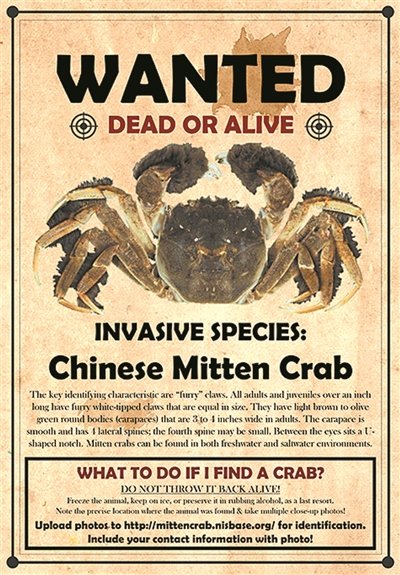Will Insatiable Diners be Able to Prevent Invasive Species From Spreading?
“Grant me a visa and book me a flight, then tell me how endangered you want them to be.”
It's not uncommon to see comments like this attached to Chinese news stories about invasive species in overseas countries, particularly for the ostensibly delicious ones like oysters, crawfish, or carp.

As our world becomes more and more interconnected, the spread of invasive species is becoming a global environmental problem in rural communities and large cities alike, with China subject to its own levels of threat. As the capital of this vast and varied country, Beijing ranks as the third most "invaded" region in the People's Republic. In fact, according to a report about China's ecology released by the Ministry of Ecology and Environment of the People’s Republic of China, 660 invasive species have been found in China, 77 of which pose a threat or potential threat to the natural ecosystem. What's more, 215 of these species have already claimed territory in national nature reserves, resulting in financial and environmental losses upwards of RMB 200 billion per year, not to mention their long-term effects such as endangering local species or contributing to new allergens for the population. Compared to the last inspection took place between 2008 and 2010, a whopping 172 new invasive species were discovered.

Given that ecosystems are self-contained symbiotic systems, these species usually have few or no natural enemies, making unfettered propagation all but inevitable. So, when biological and physical mitigation efforts fail, some have pondered whether insatiable diners with a taste for the obscure could cure the problem. In other words, could we eat our way out of this problem by placing invasive species on the dining table?
Unfortunately, the answer is a resounding no. First, the majority of these invasive species are simply inedible. Second, even for those that are edible and find themselves in the media spotlight such as the crawfish, the breeds that exist in the wild are drastically different from those which end up in a pot of boiling water or on your kitchen table. The finger-licking good dishes are born from cultivated species – at least they're supposed to be – instead of the wild ones, meaning consuming these crustaceans does little to regulate their presence in an ecosystem. And on that note, eating wild crawfish, oysters, snails, or carp comes with a much higher risk of conveying bacteria, viruses, and parasites given that they sometimes dwell in heavily polluted bodies of water.

Nevertheless, thanks to the rise in e-commerce and globalization, it's becoming harder and harder to prevent invasive species from disrupting local ecosystems. However, in addition to tightening regulations and reinforcing customs inspections, there are a few things that folks can do to prevent – or at least slow down – these invasive species. For one, and perhaps most obvious, don't purchase any as a pet and don't release your pets into the wild when you get bored with them. Likewise, don't litter in natural areas (or cities for that matter), and avoid ordering animal products, seeds, and fresh produce from overseas. Lastly, call your local Ecology and Environment Bureau if you see anything fishy, or rather, suspicious fish and other flora and fauna, around town.
Read: Does Second Tier Necessarily Mean Second-Rate?
Images: Rafa Huertas, Reuters, Shobserver, Mdaily.Hangzhou, 花百科







